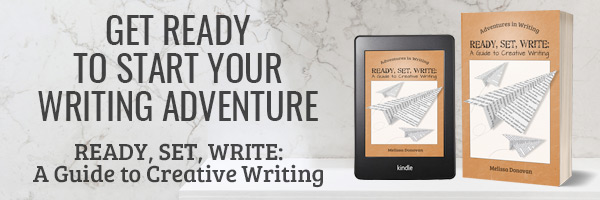Description of Island Creative Writing

What is descriptive writing?
Writing description is a necessary skill for most writers. Whether we're writing an essay, a story, or a poem, we usually reach a point where we need to describe something. In fiction, we describe settings and characters. In poetry, we describe scenes, experiences, and emotions. In creative nonfiction, we describe reality. Descriptive writing is especially important for speculative fiction writers and poets. If you've created a fantasy world, then you'll need to deftly describe it to readers; Lewis Carroll not only described Wonderland (aff link); he also described the fantastical creatures that inhabited it.
But many writers are challenged by description writing, and many readers find it boring to read — when it's not crafted skillfully.
However, I think it's safe to say that technology has spoiled us. Thanks to photos and videos, we've become increasingly visual, which means it's getting harder to use words to describe something, especially if it only exists in our imaginations.
What is Descriptive Writing?
One might say that descriptive writing is the art of painting a picture with words. But descriptive writing goes beyond visuals. Descriptive writing hits all the senses; we describe how things look, sound, smell, taste, and feel (their tactile quality).
The term descriptive writing can mean a few different things:
- The act of writing description (I'm doing some descriptive writing).
- A descriptive essay is short-form prose that is meant to describe something in detail; it can describe a person, place, event, object, or anything else.
- Description as part of a larger work: This is the most common kind of descriptive writing. It is usually a sentence or paragraph (sometimes multiple paragraphs) that provide description, usually to help the reader visualize what's happening, where it's happening, or how it's happening. It's most commonly used to describe a setting or a character. An example would be a section of text within a novel that establishes the setting by describing a room or a passage that introduces a character with a physical description.
- Writing that is descriptive (or vivid) — an author's style: Some authors weave description throughout their prose and verse, interspersing it through the dialogue and action. It's a style of writing that imparts description without using large blocks of text that are explicitly focused on description.
- Description is integral in poetry writing. Poetry emphasizes imagery, and imagery is rendered in writing via description, so descriptive writing is a crucial skill for most poets.
Depending on what you write, you've probably experimented with one of more of these types of descriptive writing, maybe all of them.
Can you think of any other types of descriptive writing that aren't listed here?
How Much Description is Too Much?
Classic literature was dense with description whereas modern literature usually keeps description to a minimum.
Compare the elaborate descriptions in J.R.R. Tolkien'sLord of the Rings trilogy with the descriptions in J.K. Rowling'sHarry Potter series (aff links). Both series relied on description to help readers visualize an imagined, fantastical world, but Rowling did not use her precious writing space to describe standard settings whereas Tolkien frequently paused all action and spent pages describing a single landscape.
This isn't unique to Tolkien and Rowling; if you compare most literature from the beginning of of the 20th century and earlier to today's written works, you'll see that we just don't dedicate much time and space to description anymore.
I think this radical change in how we approach description is directly tied to the wide availability of film, television, and photography. Let's say you were living in the 19th century, writing a story about a tropical island for an audience of northern, urban readers. You would be fairly certain that most of your readers had never seen such an island and had no idea what it looked like. To give your audience a full sense of your story's setting, you'd need pages of detail describing the lush jungle, sandy beaches, and warm waters.
Nowadays, we all know what a tropical island looks like, thanks to the wide availability of media. Even if you've never been to such an island, surely you've seen one on TV. This might explain why few books on the craft of writing address descriptive writing. The focus is usually on other elements, like language, character, plot, theme, and structure.
For contemporary writers, the trick is to make the description as precise and detailed as possible while keeping it to a minimum. Most readers want characters and action with just enough description so that they can imagine the story as it's unfolding.
If you've ever encountered a story that paused to provide head-to-toe descriptions along with detailed backstories of every character upon their introduction into the narrative, you know just how grating description can be when executed poorly.
However, it's worth noting that a skilled writer can roll out descriptions that are riveting to read. Sometimes they're riveting because they're integrated seamlessly with the action and dialogue; other times, the description is deftly crafted and engaging on its own. In fact, an expert descriptive writer can keep readers glued through multiple pages of description.
Descriptive Writing Tips
I've encountered descriptive writing so smooth and seamless that I easily visualized what was happening without even noticing that I was reading description. Some authors craft descriptions that are so lovely, I do notice — but in a good way. Some of them are so compelling that I pause to read them again.
On the other hand, poorly crafted descriptions can really impede a reader's experience. Description doesn't work if it's unclear, verbose, or bland. Most readers prefer action and dialogue to lengthy descriptions, so while a paragraph here and there can certainly help readers better visualize what's happening, pages and pages of description can increase the risk that they'll set your work aside and never pick it up again. There are exceptions to every rule, so the real trick is to know when lengthy descriptions are warranted and when they're just boring.
Here are some general tips for descriptive writing:
- Use distinct descriptions that stand out and are memorable. For example, don't write that a character is five foot two with brown hair and blue eyes. Give the reader something to remember. Say the character is short with mousy hair and sky-blue eyes.
- Make description active: Consider the following description of a room: There was a bookshelf in the corner. A desk sat under the window. The walls were beige, and the floor was tiled. That's boring. Try something like this: A massive oak desk sat below a large picture window and beside a shelf overflowing with books. Hardcovers, paperbacks, and binders were piled on the dingy tiled floor in messy stacks.In the second example, words likeoverflowingandpiled are active.
- Weave description through the narrative: Sometimes a character enters a room and looks around, so the narrative needs to pause to describe what the character sees. Other times, description can be threaded through the narrative. For example, instead of pausing to describe a character, engage that character in dialogue with another character. Use the characters' thoughts and the dialogue tags to reveal description: He stared at her flowing, auburn curls, which reminded him of his mother's hair. "Where were you?" he asked, shifting his green eyes across the restaurant to where a customer was hassling one of the servers.
Simple descriptions are surprisingly easy to execute. All you have to do is look at something (or imagine it) and write what you see. But well-crafted descriptions require writers to pay diligence to word choice, to describe only those elements that are most important, and to use engaging language to paint a picture in the reader's mind. Instead of spending several sentences describing a character's height, weight, age, hair color, eye color, and clothing, a few, choice details will often render a more vivid image for the reader: Red hair framed her round, freckled face like a spray of flames. This only reveals three descriptive details: red hair, a round face, and freckles. Yet it paints more vivid picture than a statistical head-to-toe rundown:She was five foot three and no more than a hundred and ten pounds with red hair, blue eyes, and a round, freckled face.

10 descriptive writing practices.
How to Practice Writing Description
Here are some descriptive writing activities that will inspire you while providing opportunities to practice writing description. If you don't have much experience with descriptive writing, you may find that your first few attempts are flat and boring. If you can't keep readers engaged, they'll wander off. Work at crafting descriptions that are compelling and mesmerizing.
- Go to one of your favorite spots and write a description of the setting: it could be your bedroom, a favorite coffee shop, or a local park. Leave people, dialogue, and action out of it. Just focus on explaining what the space looks like.
- Who is your favorite character from the movies? Describe the character from head to toe. Show the reader not only what the character looks like, but also how the character acts. Do this without including action or dialogue. Remember: description only!
- Forty years ago we didn't have cell phones or the internet. Now we have cell phones that can access the internet. Think of a device or gadget that we'll have forty years from now and describe it.
- Since modern fiction is light on description, many young and new writers often fail to include details, even when the reader needs them. Go through one of your writing projects and make sure elements that readers may not be familiar with are adequately described.
- Sometimes in a narrative, a little description provides respite from all the action and dialogue. Make a list of things from a story you're working on (gadgets, characters, settings, etc.), and for each one, write a short description of no more than a hundred words.
- As mentioned, Tolkien often spent pages describing a single landscape. Choose one of your favorite pieces of classic literature, find a long passage of description, and rewrite it. Try to cut the descriptive word count in half.
- When you read a book, use a highlighter to mark sentences and paragraphs that contain description. Don't highlight every adjective and adverb. Look for longer passages that are dedicated to description.
- Write a description for a child. Choose something reasonably difficult, like the solar system. How do you describe it in such a way that a child understands how he or she fits into it?
- Most writers dream of someday writing a book. Describe your book cover.
- Write a one-page description of yourself.
If you have any descriptive writing practices to add to this list, feel free to share them in the comments.
Descriptive Writing
Does descriptive writing come easily to you, or do you struggle with it? Do you put much thought into how you write description? What types of descriptive writing have you tackled — descriptive essays, blocks of description within larger texts, or descriptions woven throughout a narrative? Share your tips for descriptive writing by leaving a comment, and keep writing!
Further Reading: Abolish the Adverbs, Making the Right Word Choices for Better Writing, and Writing Description in Fiction.

Description of Island Creative Writing
Source: https://www.writingforward.com/creative-writing/what-is-descriptive-writing
0 Response to "Description of Island Creative Writing"
Post a Comment